Click here to read the magazine article or see below.
The Tech Trends to Watch in 2018
You won’t go too far these days, without reading a story or two on blockchain or machine learning/ artificial intelligence. They are without doubt, the two biggest tech energy buzzwords being used today. And unless you happened to have been working at one of the large tech companies for the last decade, you’re probably understandably playing catch-up.
But fear not, it’s not as confusing as you might think, and perhaps not as new as you’ve been lead to believe either. We take a look at the hype in technology that ultimately could change the way you work in 2018.
Did you know that Blockchain, is almost 10 years old and Artificial Intelligence even older?
You’d probably be surprised to learn that blockchain has been around since 2009, and artificial intelligence (formerly known as 6th generation computing) has been around since the early 1990s.
That’s not to understate in any way recent advancements leveraging cloud computing, it’s just that it’s not necessarily the technology that has materially changed. What has changed, is companies’ adoption and peoples’ access to the technology.
Microsoft has a stated it’s ambition to “democratize” machine learning, blockchain and all things AI, making it available to everyone. And nowhere is this more apparent than when you look at their Azure Cloud platform – where, just days into a new project, data enthusiasts can be working on advanced machine learning, crunching through large sets of data to spot patterns and correlations which help in some way to predict the future.
But how do these technologies help me in energy?
OK, so first for the bad news. Energy Prices are set to rise from April 2018, quite considerably, and in two very distinct ways. Firstly, third party charges will rise with several increases in non-commodity costs. That means you can’t avoid them by trying to negotiate better deals with your supplier and they’ll account for over 50% of your bill.
On a more positive note, whilst the wholesale component of your energy price has been relatively low – on average about £42MWh – it has also become increasingly volatile with prices fluctuating in the balancing market from negative -£98 to a positive £1,523 per MWh. And the good news is, with such fluctuations there is opportunity.
Energy Flexibility matters
What all this means going forward, is that energy flexibility is going to become increasingly valuable:
- Some customers, will naturally have a degree of flexibility in their manufacturing/industrial processes, where they can benefit from turning up/down during low price/high price periods.
- Other customers with less flexibility, may have opportunities to introduce flexibility into their estate, with on-site generation, batteries, electric vehicles etc.
So what technology will really make the difference in 2018
Blockchain is clearly a very interesting technology, with the potential to change the way markets and transactions work. We’ve been working with our partner Microsoft on a project to explore the potential of blockchain in energy and we see some exciting possibilities ahead. On a more general level, we think there’s a fair distance to go before we see blockchain technology replacing existing transaction technology. So it’s definitely one to watch, and expect more as this develops.
But machine learning is a different matter. The power is in your hands today. The tools are available now and don’t require any change to processes and systems!
How machine learning could really start to help
Forecasting energy demand
Being able to forecast your demand and then overlay energy costs will become increasingly valuable. And to really get the benefits you’ll need to crunch the half-hourly forecasts so that you can overlay all the different pricing structures, as well as the balancing market scenarios.
Machine learning will really help in forecasting energy demand, reducing the need for complex Excel Spreadsheet computations. Starting by simply looking at consumption and weather patterns you can then find the right model to fit and forecast data. And for more advanced customers you can overlay all manner of data from footfall to production schedules.
Predicting short term energy prices
Machine learning can also be helpful in predicting short-term energy prices. It’s easier than you’d imagine as we have a very fundamentals driven market and if you can track supply and demand, you can start to understand the price. So when the sun is shining, and the wind blowing you have potential for low prices. Conversely if supply is constrained, then prices are likely to be higher. There are many data sets available and when you process all of this data through a machine learning model, you can start to draw some very interesting insights.
Our tech advice for 2018
We’re not anticipating many energy managers will be rushing out to get a cloud licence, and sign up to ML Studio to start crunching their own data. But for those that do, please get in touch, we’d love to share ideas and work with you! And for those with an interest in technology, looking to help reduce their energy spend through the use of ML, here are our top tips for 2018 –
Get your data sets in good order. Accurate metering and site data is the starting point for any good analysis. The old adage of rubbish in, rubbish out really applies when it comes to ML.
Make technology a priority. Work with service providers and companies that take data, and machine learning seriously. There is a lot of value in your data and unlocking it does not need to come with great expense, given the availability of this technology now.
Recognise the value in your energy estate. Seek out providers who are transparent and open with how they provide you information and insights. It’s not as complicated as you think and balancing the energy system should be a shared responsibility, with shared value.
So get ready for an interesting 2018, and put machine learning, AI and data firmly on the agenda!
http://www.tomorrowsfm.com



